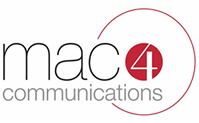Writing a great lead may be the single most important thing you can do as a writer. Sure, you need a good topic, substantive content, and the details to back it up. But a lead is like a first date. Make a mistake here, and the relationship is over before it even begins.
The lead is the opening paragraph of an article—it defines the subject and establishes the voice, tone, and direction of the piece. It effectively introduces the reader to the writing and, if all goes well, takes things to the next level.
But writing a great lead is not just difficult; it can be downright scary. Who is reading my article? What should I tell them first? Will they stick around and read to the end? It turns out that writing leads—like dating—requires confidence, vision, and quite a bit of art.
Summary Lead
Traditional journalism typically features breaking news events. These are best introduced with the 5W/H (who, what, when, where, why, and how). This type of lead should be used when the information is truly new to the reader and the subject speaks for itself.
Anecdotal Lead
Everyone likes a good story, and sometimes the best way to gain a reader’s attention is by recounting an intriguing episode. This type of lead starts slowly and gradually reveals the bigger picture. Like a movie trailer, it gives the reader a sneak peak at the drama about to unfold.
Question Lead
All drama involves conflict and struggle. By posing a question to your audience in the lead, you establish an immediate connection with the reader. And you challenge them to read on, try and figure out the answer, and ultimately to come on a journey with you.
First-Person Lead
This type of lead boldly proclaims the voice of the writer by using “I”. It inserts the writer as a character in the story, offering their unique perspective on the details of the event. It should be used sparingly to avoid compromising objectivity in the mind of the reader.
Leads can take almost any form, but the best writers tend to follow these rules: be specific, be brief, remember your audience, remain honest, and above all, keep them entertained!
Author: Ashlee Goodman

